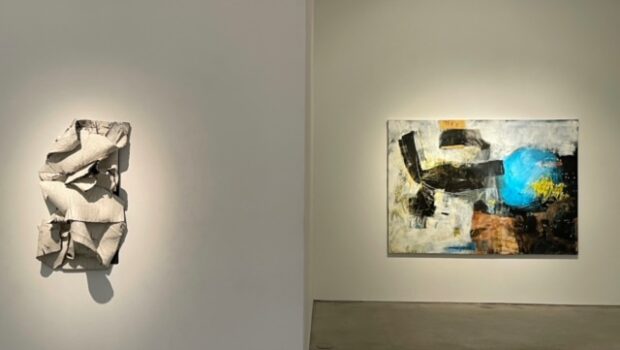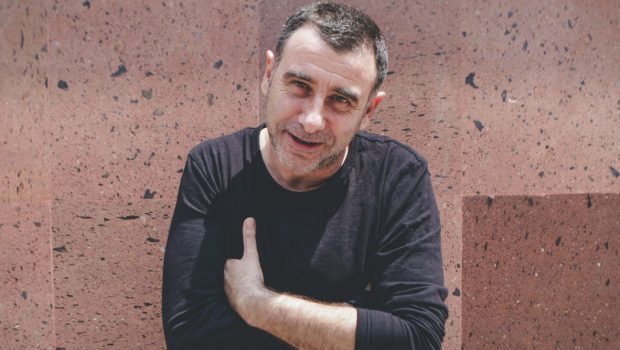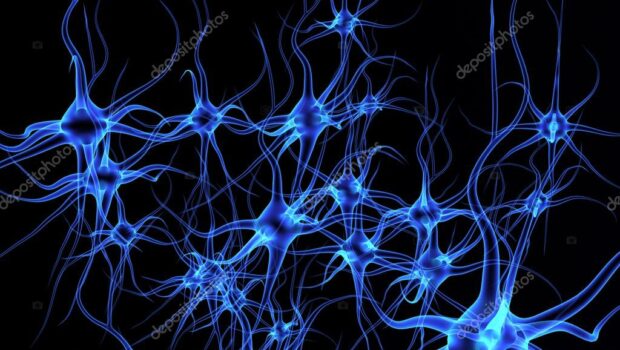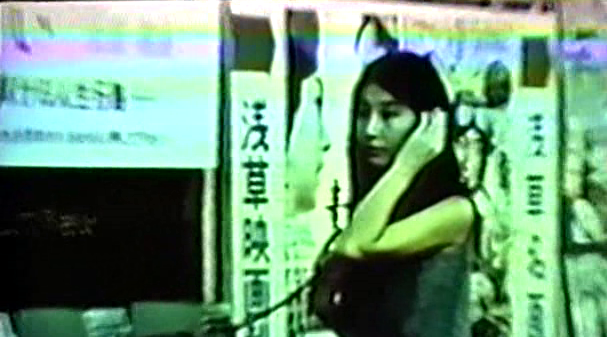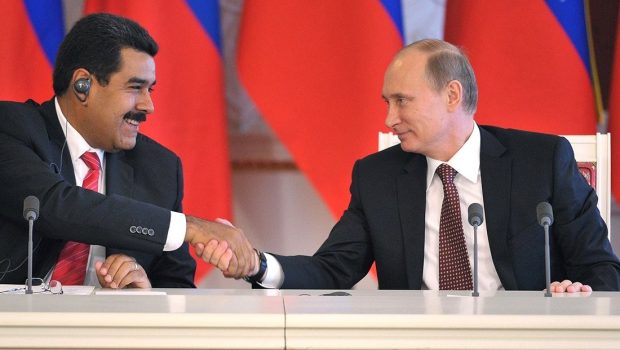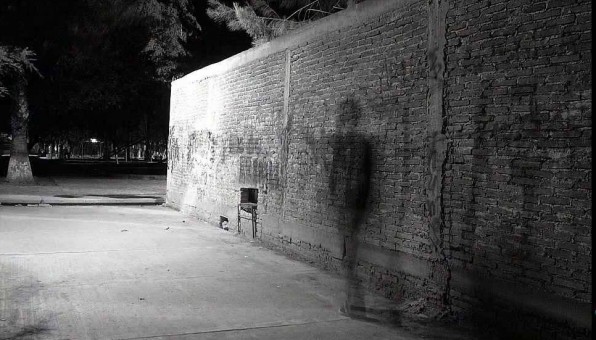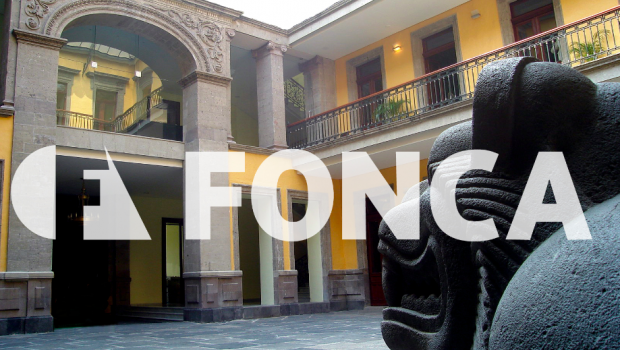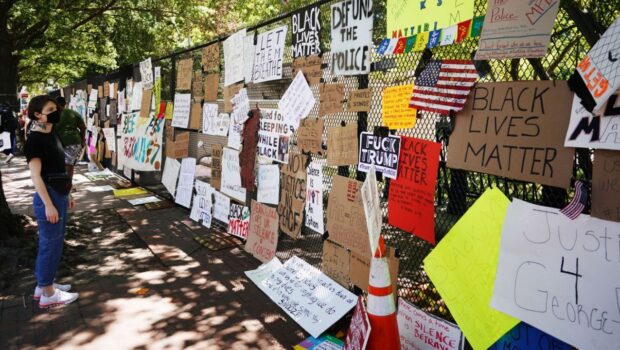Dialogues: A Convergence of Color and Form Tatiana Escallón and Marisol Valencia
DIÁLOGOS: UNA CONVERGENCIA DE COLOR Y FORMA Tatiana Escallón y Marisol Valencia
Wendolyn Lozano Tovar
On view: January 12 – February 24, 2024. Images courtesy of the gallery
Anya Tish Gallery has presented, Dialogues: A Convergence of Color and Form, an exhibition featuring two Houston-based Latinx artists: Colombian-born Tatiana Escallón and Mexico-born Marisol Valencia, who will share the gallery space with their thought-provoking, meticulous, and highly textural artworks. Tatiana Escallón’s large format abstract paintings confront the viewer with raw vivid markings and brilliant self-authored texts. Complimenting the space with a subtle grace are Marisol Valencia’s minimal, yet highly complex monochromatic porcelain sculptures. Although employing different techniques and mediums, both artists embrace the emotive value of color and form, highlighting themes such as memory, displacement, and feminism.
Literal had the opportunity to have a conversation with both artists
***
The Art of Endurance by Marisol Valencia
WLT: Your porcelain sculptures explore the fragility of life, revealing cracks that take their own shape. How do you translate the ways to endure that each of your pieces have into the human experience?
MV: During the creation of this series, it was very important to me that the pieces represented opposite feelings that human beings experience when going through a devastating situation. The intention was to create cracked and collapsed porcelain boxes that show both pain and suffering, as well as human resilience and strength.
Human beings have the most valuable opportunity to be reborn from suffering. Transforming and recreating ourselves means going through pain, feeling vulnerable, and still carrying on. In the end, the memory of what was experienced is always there, but so is what was learned.
The sequels or emotional scars on the road (cracks and deformations in the porcelain) become vestiges of the wisdom and inner beauty that emerge when the experience is overcome.
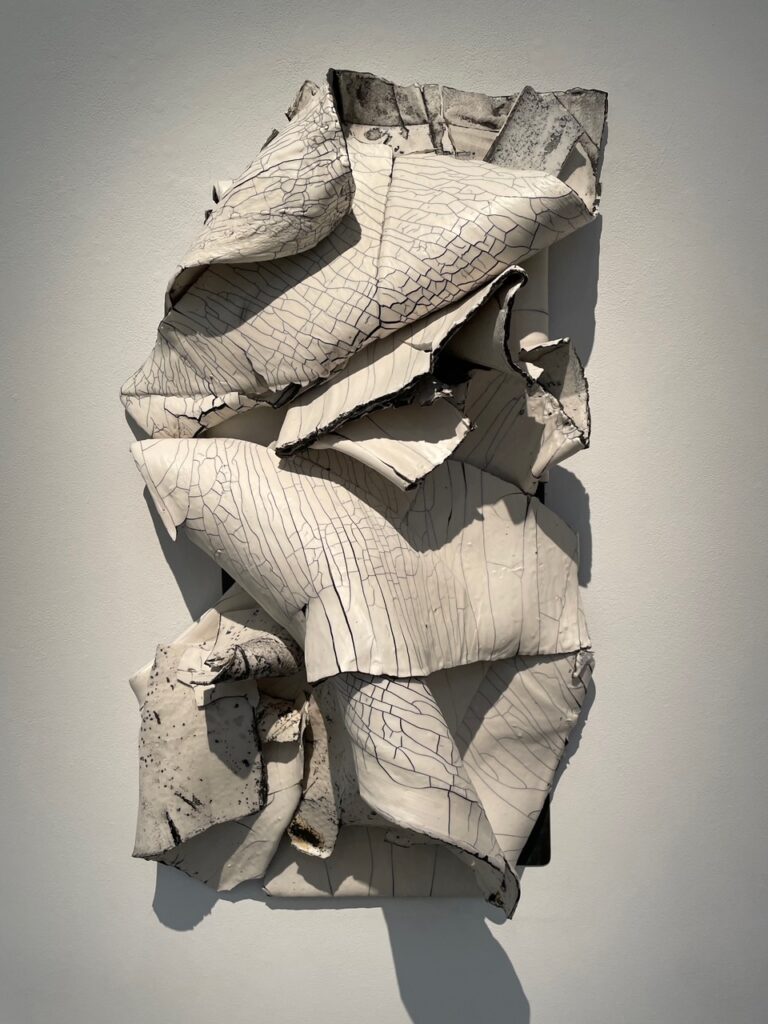
WLT: How did your background in art restoration permeate the creative process of these pieces?
MV:** During the 4 years in which I studied Restoration and Conservation of Heritage Property in Guadalajara, Mexico, I developed a great interest in the materiality of art. I was passionate about studying in depth the composition, deterioration, and interaction of the materials that make up a piece. Now that I am dedicated to creating the work of art, it has become of utmost importance in my creative process to “listen” to what the material itself has to say or offer, discovering its expressive power and understanding its social and historical connotation.
Ways to Endure is a series where material selection and the creation process were carried out very carefully. For this work, porcelain was the material that could best represent the metamorphosis that human beings experience when going through a stressful situation and managing to evolve with it. Any clay in its raw state has very brittle characteristics. It would be like making a sandcastle that gets deformed with water and contact. Only when embracing the “painful” fire and submitting to it (in this case, the devastating situation) will the composition of the materials be transformed. This is how porcelain becomes one of the most stable and resistant materials on the planet, being used from the medical field as prostheses, and even by NASA. These pieces speak of the mental, emotional, and spiritual transformation that some people experience when they find meaning and purpose in difficult situations.
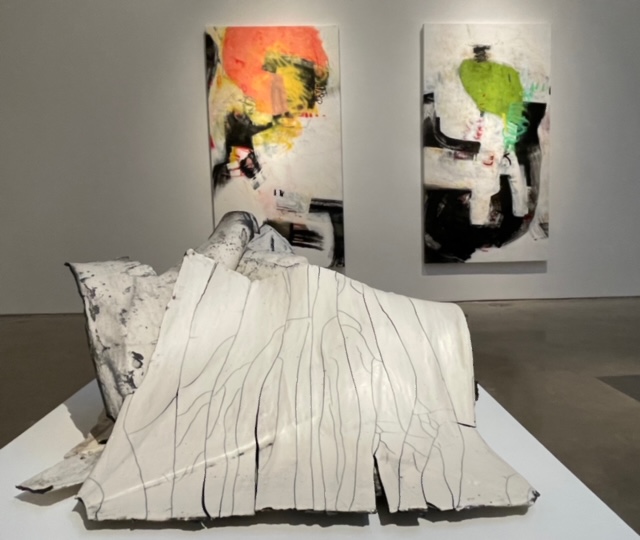
WLT: Like a blank sheet, each sculpture has a different voice from which to tell its own story. How important was it for you to establish monochrome values as a starting point for your works to express themselves?
MV: This work is based on a personal experience, but from the starting point, I was very clear that I wanted the work to be as universal as possible, that is to say that it not only told my own story but that the viewer could relate to it and see in my work their individual story of struggle and evolution. Regardless of age, race, gender, religion, economic, social, or cultural situation, human beings are exposed to painful moments, whether of loss, illness, or any other traumatic experience. I, therefore, decided that all the pieces were in white and had black cracks to avoid any association with color, allowing the gaze to focus on the unique way that each piece has to leave its original shape behind and transform itself into something more beautiful after the interaction with fire.
***
Tatiana Escallón: The Language of Color
WLT: Your works possess a powerful poetic charge of your own authorship. Where does your inclination for poetry come from and how do you incorporate it into your creative process as an artist?
TE: My inclination for writing arises from the desire to capture moments and experiences that have deeply impacted me, such as being an immigrant at an adult age, a mother, and a woman. I believe that words have lasting power; once written, they remain as witnesses of our experiences.
Constant exposure to vocal music has fueled my interest in the connection between sounds and meanings, and reading poets such as Federico García Lorca and Octavio Paz has enriched my understanding of poetry, while nourishing my own creative process.
Exploration in abstract art, lacking physical references, has led me to investigate how words and writing can communicate without being tied to specific narratives. My writings, which I call free poems, lack visual narrative intent or predefined structure. In my works, words or text give dynamism and contrast, creating personal symbols that remain half-hidden between colors, backgrounds, textures, and marks. This interaction seeks to maintain privacy, highlighting its importance and adding an aura of enigma that attracts the viewer, inviting them to discover and solve.
The texts in my works explore various ways of representing words, challenging the conventional rules of reading, such as left to right, horizontality, inside and out, or the union between shapes and languages. I originally write in Spanish, my mother tongue, but my works reflect my bilingual and bicultural identity, having lived and studied between Colombia and the United States, where I currently reside.
My work is autobiographical, using fragments of memory and imagination, and is created in the present moment.
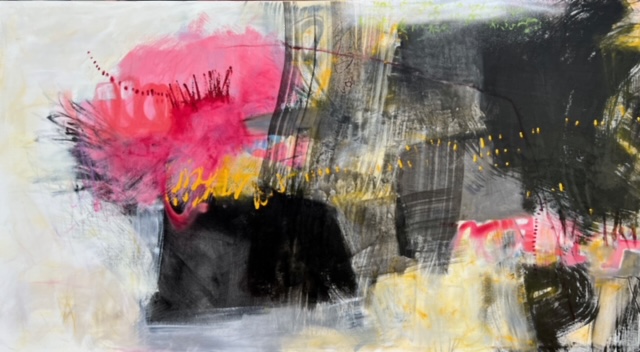
WLT: Choosing a limited color palette contrasts and highlights your poems, sometimes making them transparent. What role does color play in the memory and imagery of your writing?
The use of color is a fundamental facet in my work, an exploration that I have cultivated over the years. I have had moments in my artistic career of very bright, opaque, totally black or white colors.
For me, color, or even its absence, is something fascinating. I’m especially interested when the color creates the shape rather than simply being an addition to a pre-established shape.
I have used text in my work in a similar way, letting it dictate the shape of the color, and on other occasions, it is found as recognizable writing, hidden behind other colors or superimposed.
The limited palette I choose for my works reflects the importance I give to the use of color. All colors change their value depending on their environment and the proportions in which they are presented. I find this fascinating, almost a mathematical game, and although I have studied it in design, I consider that I have managed to free myself from the established restrictions of “beauty” towards color to propose options that go beyond a preconceived aesthetic that works for me.
Color in my work is deeply related to my present and, at the same time, to my memory. For example, black, a color that is very present in my work, has a special meaning for me. I relate it to Bogota, Colombia, where I grew up, and where the land is intensely black and fertile. This connection with fertility is reflected in my work when I talk about women, using black as a metaphor for the ability to give life. I also relate it to music, specifically the piano, and its powerful presence.
I use vibrant colors that reflect part of my active and positive personality. Writing on the canvas becomes a visual expression of emotions, with colors, thicknesses, sizes, materials, and textures carefully selected to interpret the essence of the poem that goes with the work.
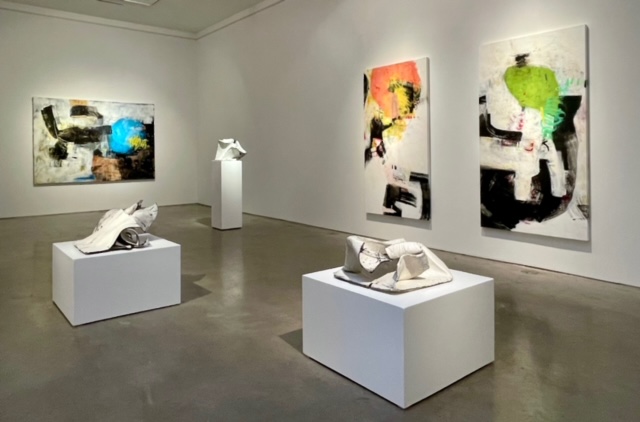
WLT: How does your background in graphic design permeate your works?
My training in graphic design allowed me a personal approach to the use and selection of texts, using a variety of fonts and even creating them. When I was a student, things were done by hand or using offset printing techniques, which required meticulous attention when it came to handling typography.
During my student years, I remember marking names by hand on envelopes for social events, using ink and pen. This led me to memorize different types of letters and explore hand movement to create specific gestures.
Over time, I fell in love with these universal shapes that transmit messages and how their aesthetics are related to communication. I learned about its possibilities of altering a space and becoming shapes through its location, spacing, transparencies, and size.
Eventually, I moved away from design and illustration, finding myself in painting and the need to express myself in my own way. The words emerged, transforming into poems that I captured on the canvas using different techniques. By capturing my texts in various ways on the canvas, the legacy of graphic design in my work is manifested more clearly.
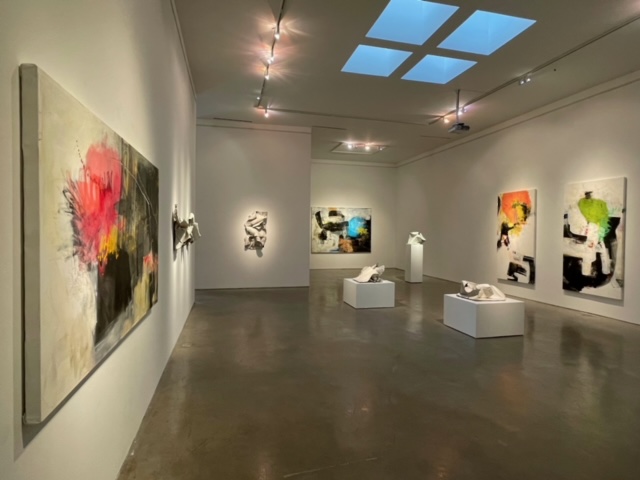
***
Born in Bogotá, Colombia, Tatiana Escallón received her B.A. in Graphic Design at University of Bogotá Jorge Tadeo Lozano in 1991 and studied Fine Arts at Universidad de los Andes in Bogotá, Colombia. Since then, the artist has exhibited regionally and internationally: Casa Museo El Romeral, Madrid, Spain; Museo Silverio Perez, Mexico City, Mexico; World Textile Art, X Bienal de Arte Contemporáneo, Manizales, Colombia; Art Museum Texas, Sugarland, TX; The Holocaust Museum, Houston, TX; Institute of Hispanic Culture, Houston, TX; Asia Society Texas Center, Houston, TX. She has also received several awards and grants such as: Wendy Wagner Award Grant (2023), and Houston Arts Alliance, SACI Grant by the City of Houston. In 2023, the artist completed an artist-in-residence at the Asia Society Texas Center, Houston, TX. In October 2024, Escallón will be exhibiting at The Nave Museum, Victoria, TX.
Born in Guadalajara, Mexico, Marisol Valencia has lived in the United States since 2004, and most recently completed the Block XXI program at the Glassell School of Art, where she was awarded a certificate of achievement for her studies in ceramics. While in Mexico, Valencia studied Conservation and Restoration of Art and History at the Escuela de Conservación y Restauración de Occidente in Guadalajara, Jalisco, Mexico. Her work was recently a part of the noteworthy exhibition, LatinX Art in Times of Conflict at the Holocaust Museum, Houston, Texas, and Visiones de México at the Consulate General of Mexico, Houston, TX.
La galería Anya Tish Gallery ha presentado Diálogos: una convergencia de color y forma, una exposición que presenta a dos artistas latinoamericanas radicadas en Houston: Tatiana Escallón, nacida en Colombia, y Marisol Valencia, nacida en México. Ambas compartirán el espacio de la galería con sus meticulosos y estimulantes obras de arte. Las pinturas abstractas de gran formato de Tatiana Escallón confrontan al espectador con marcas crudas y vívidas y brillantes textos de su propia autoría. Complementando el espacio con una gracia sutil se encuentran las esculturas de porcelana monocromáticas mínimas pero muy complejas de Marisol Valencia. Aunque emplean diferentes técnicas y medios, ambas artistas abrazan el valor emotivo del color y la forma, destacando temas como la memoria, el desplazamiento y el feminismo. Literal tuvo la oportunidad de conversar con ambas artistas
***
Tatiana Escallón El lenguaje del color
WLT: Tus obras tienen una poderosa carga poética de tu propia autoría. ¿De dónde surge tu inclinación por la poesía y cómo la incorporas a tu
proceso creativo como artista?
TE: Mi inclinación por la escritura surge del deseo de capturar momentos y experiencias que me han impactado profundamente, como el hecho de ser inmigrante a una edad adulta, madre y mujer. Considero que las palabras tienen un poder duradero; una vez escritas, permanecen como testigos de nuestras vivencias.
La exposición constante a la música vocal ha avivado mi interés en la conexión entre sonidos y significados, y la lectura de poetas como Federico García Lorca y Octavio Paz ha enriquecido mi comprensión de la poesía, a la vez que ha nutrido mi propio proceso creativo.
La exploración en el arte abstracto, carente de referentes físicos, me ha llevado a indagar cómo las palabras y la escritura pueden comunicar sin atarse a narrativas específicas. Mis escritos, a los que llamo poemas libres, carecen de intención narrativa visual o estructura predefinida. En mis obras, las palabras o el texto entran a dar dinamismo y contraste, creando símbolos personales que permanecen semiocultos entre colores, fondos, texturas y marcas. Esta interacción busca mantener la privacidad, resaltando su importancia y añadiendo un aura de enigma que atrae al espectador, invitándolo a descubrir y resolver.
Los textos en mis obras exploran diversas formas de representar palabras, desafiando las reglas convencionales de la lectura, como lo son de izquierda a derecha, la horizontalidad, el derecho y el revés, o la unión entre formas y lenguajes. Originalmente escribo en español, mi lengua materna, pero mis obras reflejan mi identidad bilingüe y bicultural al haber vivido y estudiado entre Colombia y Estados Unidos, donde resido actualmente.
Mi obra es autobiográfica, utilizando fragmentos de memoria e imaginación, y se construye en el momento presente.

WLT: La elección de una paleta limitada de colores contrasta, resalta y a
veces transparenta tus poemas. ¿Qué papel juega el color en la memoria y
el imaginario de tu escritura?
TE: El uso del color es una faceta fundamental en mi obra, una exploración que he cultivado a lo largo de los años. He tenido momentos en mi carrera artística de colores muy vivos, opacos, totalmente negros o blancos.
Para mí, el color, o incluso su ausencia, es algo fascinante. Me interesa especialmente cuando el color es el que crea la forma en lugar de ser simplemente un añadido a una forma preestablecida.
He utilizado el texto en mi obra de una manera similar dejando que sea éste el que dicte la forma del color, y en otras ocasiones se encuentra como escritura reconocible, ocultándose detrás de otros colores o sobrepuesto.
La paleta limitada que elijo para mis obras refleja la importancia que concedo al uso del color. Todos los colores cambian su valor dependiendo de su entorno y las proporciones en las que se presentan. Este juego casi matemático me parece fascinante, y aunque lo he estudiado en el diseño, considero que he logrado liberarme de las restricciones establecidas de “belleza” hacia el color para proponer opciones que van más allá de una estética preconcebida que para mí funciona.
El color en mi obra está profundamente relacionado con mi presente y, al mismo tiempo, con mi memoria. Por ejemplo, el negro, un color que está muy presente en mi trabajo, tiene un significado especial para mí. Lo relaciono con Bogotá, Colombia, donde crecí, y cuya tierra es intensamente negra y fértil. Esta conexión con la fertilidad se refleja en mi obra cuando hablo de la mujer, utilizando el negro como una metáfora de la capacidad de dar vida. También lo relaciono con la música, específicamente con el piano, y su poderosa presencia.
Utilizo colores vibrantes que reflejan parte de mi personalidad activa y positiva. La escritura sobre el lienzo se convierte en una expresión visual de emociones, con colores, grosores, tamaños, materiales y texturas cuidadosamente seleccionados para interpretar la esencia del poema que acompaña a la obra.

WLT: ¿De qué manera tu formación en diseño gráfico permea en tus obras?
TE: Mi formación en diseño gráfico me permitió un acercamiento personal hacia la utilización y selección de textos, utilizando una variedad de fuentes e incluso creándolas. En mi época de estudiante, las cosas se realizaban a mano o mediante técnicas de impresión offset, lo que requería una atención meticulosa al manejo de la tipografía.
Durante mi vida de estudiante recuerdo que marcaba por encargo a mano los nombres en sobres para eventos sociales, utilizando tinta y plumilla. Esto me llevó a memorizar diferentes tipos de letras y a explorar el movimiento de la mano para crear gestos especificos.
Con el tiempo, me fui enamorando de estas formas universales que transmiten mensajes y de cómo su estética se relaciona con la comunicación. Conocí sus posibilidades de alterar un espacio y de convertirse en formas mediante su ubicación, espaciado, transparencias y tamaño.
Poco a poco, me alejé del diseño y la ilustración, encontrándome a mí misma en la pintura y en la necesidad de expresarme a mi manera. Las palabras emergieron, transformándose en poemas que plasmé en el lienzo utilizando diferentes técnicas. Al plasmar mis textos de diversas maneras sobre el lienzo se manifiesta con mayor claridad el legado del diseño gráfico en mi obra.
***
El arte de perdurar de Marisol Valencia
WLT: Tus esculturas de porcelana exploran la fragilidad de la vida, dejando al descubierto resquebrajaduras que toman forma propia. ¿Cómo traduces el modo de perdurar de tus piezas a la experiencia humana?
MV: Durante la creación de esta serie, fue muy importante para mí que las piezas representaran sentimientos opuestos que el ser humano puede experimentar al atravesar por una situación devastadora. La intención era crear cajas de porcelana agrietadas y colapsadas que mostraran, tanto el dolor y el sufrimiento, como la resiliencia y la fortaleza humana.
El ser humano tiene la valiosa oportunidad de renacer a partir del sufrimiento. El transformarse y recrearse implica atravesar el dolor, sentirse vulnerable y, aun así, continuar. Al final, siempre perdura la memoria de lo vivido, pero también la enseñanza y lo aprendido.
Las secuelas o cicatrices emocionales del camino recorrido (grietas y deformaciones en la porcelana), se vuelven vestigios de la sabiduría y la belleza interior que se adquieren cuando se supera la experiencia vivida.

WLT: ¿Cómo permearon tus conocimientos de restauración en el proceso creativo de estas piezas?
MV: Durante los 4 años en los que estudié Restauración y Conservación de Bienes Patrimoniales en Guadalajara, México, desarrollé un gran interés por la materialidad de la obra de arte. Me apasionaba estudiar a profundidad la composición, deterioro e interacción de los materiales que conforman una pieza. Ahora que me dedico a crear la obra de arte, se ha vuelto de suma importancia en mi proceso creativo “escuchar” lo que el material en sí mismo tiene que decir u ofrecer, descubrir su poder expresivo y comprender su connotación social e histórica.
Ways to Endure es una serie en la que la elección del material y el proceso de creación fue realizada con mucho detenimiento. Para esta obra, la porcelana era el material que mejor podía representar de manera literal la metamorfosis que vive el ser humano al atravesar una situación estresante y lograr evolucionar con ella. Cualquier arcilla en su estado crudo tiene características muy frágiles. Sería como realizar un castillo de arena que se deforma con el agua y el contacto. Solo cuando se somete y abraza al “doloroso” fuego (en este caso a la situación devastadora) es que la composición de los materiales se transforma. Es así como la porcelana se convierte en uno de los materiales más estables y resistentes del planeta, siendo utilizada desde el campo médico como prótesis, hasta por la NASA. Estas piezas hablan de este cambio de forma mental, emocional y espiritual que obtienen aquellas personas que encuentran sentido y propósito en la dificultad.

WLT: Cada escultura tiene una voz diferente desde donde contar su propia historia. Como una hoja en blanco. ¿De qué manera fue importante para ti establecer valores monocromáticos como punto de partida para que tus obras se expresaran a sí mismas?
MV: Esta obra parte de una experiencia personal, pero desde el principio de su creación, tenía muy claro que quería que la obra fuera lo más universal posible, es decir que no solamente contara mi historia sino que el espectador pudiera relacionar sus propias vivencias con la obra y ver en ella su historia individual de lucha y evolución. El ser humano, sin importar la edad, raza, género, religión, situación económica o sociocultural, está expuesto a vivir momentos dolorosos, ya sea de pérdida, enfermedad o cualquier otra experiencia traumática. Decidí por ello que todas las piezas fueran blancas con grietas negras para así evitar cualquier asociación con el color y concentrar la mirada en la forma particular y única que cada pieza tiene de dejar atrás su forma original para así transformarse en algo más bello después de su interacción con el fuego.
***
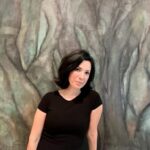 Wendolyn Lozano Tovar, (México, 1973). Poeta y artista visual. Ha impartido talleres de poesía en México, Estados Unidos y Canadá. Actualmente explora las interconexiones entre la poesía, el arte y la ciencia. Es colaboradora de Literal, Latin American Voices y autora de Tiempo de agua (Literal Publishing, 2007)
Wendolyn Lozano Tovar, (México, 1973). Poeta y artista visual. Ha impartido talleres de poesía en México, Estados Unidos y Canadá. Actualmente explora las interconexiones entre la poesía, el arte y la ciencia. Es colaboradora de Literal, Latin American Voices y autora de Tiempo de agua (Literal Publishing, 2007)


